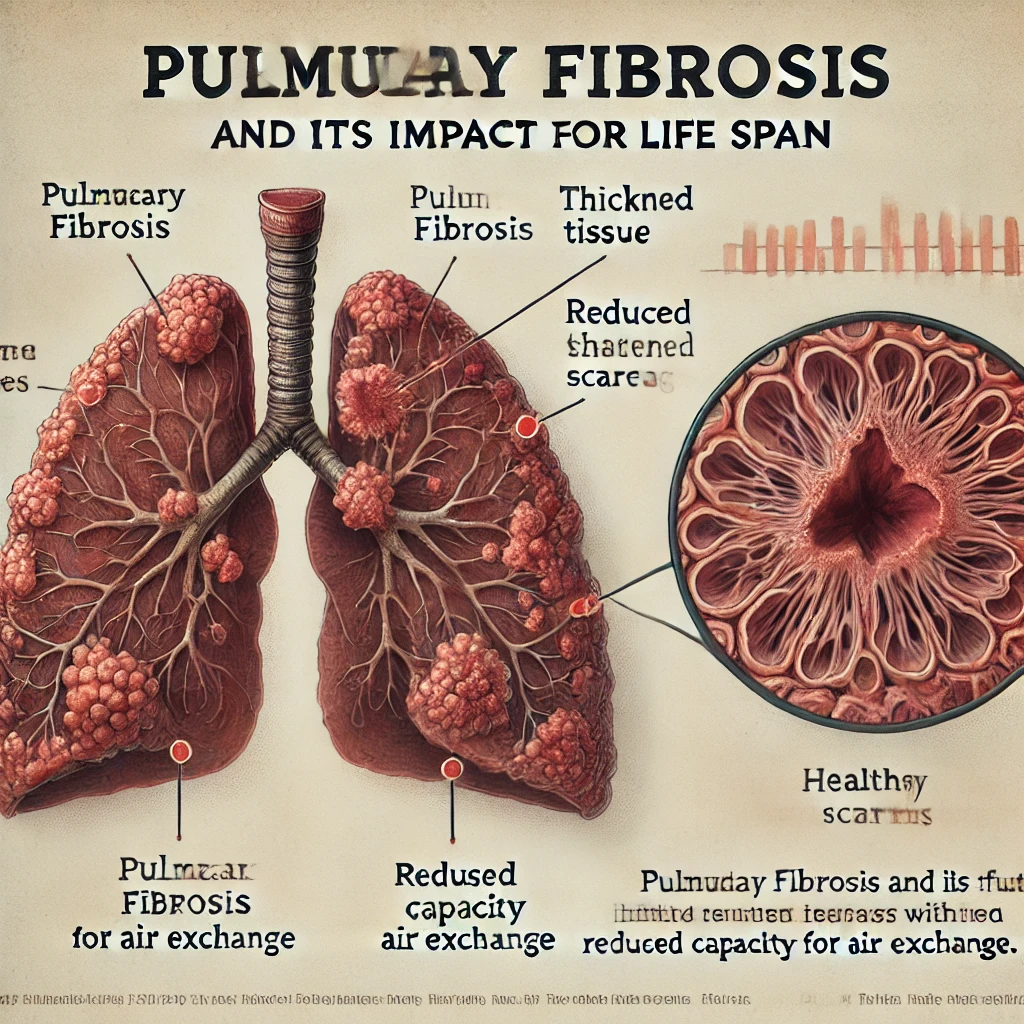Pulmonary fibrosis is a chronic lung disease that leads to the progressive scarring of lung tissue. As the lungs become stiffer, they lose their ability to function properly, making it difficult to breathe. The condition typically progresses over time, causing significant discomfort and respiratory difficulties. One of the key concerns for patients diagnosed with pulmonary fibrosis is its impact on their pulmonary fibrosis life span. This article explores the causes of pulmonary fibrosis, its symptoms, the factors influencing life expectancy, and how it can be managed to improve the quality of life.
What Is Pulmonary Fibrosis?
Pulmonary fibrosis is a condition that results in the scarring or thickening of lung tissue, which interferes with the lungs’ ability to expand and contract. As the disease progresses, the lungs lose their ability to exchange oxygen efficiently, leading to shortness of breath, fatigue, and other respiratory complications. There are several types of pulmonary fibrosis, including idiopathic pulmonary fibrosis (IPF), which is the most common, and other forms associated with environmental exposures, autoimmune diseases, and genetic factors.
While the exact cause of idiopathic pulmonary fibrosis is not well understood, it is thought to involve an overactive healing response after lung injury. This causes the lung tissue to become thickened and scarred, which in turn reduces the lungs’ ability to oxygenate the blood properly.
Symptoms of Pulmonary Fibrosis
The symptoms of pulmonary fibrosis can develop slowly, often being mistaken for other respiratory conditions in the early stages. Some common symptoms include:
- Shortness of breath, especially during physical activity or exertion
- A chronic dry cough that does not go away
- Fatigue, feeling tired even after a full night’s rest
- Unexplained weight loss or loss of appetite
- Aching muscles and joints
- Clubbing (rounded fingertips and toes) in some patients
As the disease progresses, these symptoms can worsen, making it harder to perform daily activities. Over time, the reduced ability to breathe can lead to more serious complications and impair the patient’s ability to maintain an active lifestyle.
Causes of Pulmonary Fibrosis
Pulmonary fibrosis can be triggered by a variety of factors, which may include:
- Environmental Exposure: Long-term exposure to airborne irritants such as asbestos, silica dust, and secondhand smoke can damage the lungs and lead to pulmonary fibrosis.
- Autoimmune Diseases: Conditions like rheumatoid arthritis, lupus, and scleroderma are associated with inflammation in the lungs, which can lead to fibrosis.
- Genetics: In some cases, individuals may inherit a genetic predisposition that increases the risk of developing pulmonary fibrosis.
- Medications: Certain drugs, particularly chemotherapy agents, can cause lung damage that leads to scarring.
- Idiopathic Pulmonary Fibrosis (IPF): In many cases, the cause of pulmonary fibrosis is unknown, and the disease is classified as idiopathic.
Pulmonary Fibrosis Life Span
One of the most significant concerns for patients with pulmonary fibrosis is how the disease affects their pulmonary fibrosis life span. While the progression of the disease can vary greatly between individuals, pulmonary fibrosis can shorten life expectancy, particularly if it is not diagnosed early or treated appropriately.
The average life expectancy for someone with idiopathic pulmonary fibrosis is typically between three to five years following diagnosis. However, this timeline can vary depending on several factors, including:
- The stage of the disease at diagnosis
- The severity of symptoms
- Response to treatment
- Age and overall health
Although pulmonary fibrosis is progressive, early diagnosis and timely intervention can help manage the disease and potentially improve life expectancy. Medications and lifestyle changes such as oxygen therapy, pulmonary rehabilitation, and a healthy diet can help slow disease progression and provide patients with a better quality of life.
Managing Pulmonary Fibrosis: Treatment Options
While there is no cure for pulmonary fibrosis, treatment can help alleviate symptoms, slow the progression of the disease, and improve the patient’s quality of life. Some treatment options include:
- Medications:
- Antifibrotic drugs such as pirfenidone and nintedanib have been shown to slow the progression of idiopathic pulmonary fibrosis.
- Oxygen Therapy:
- Many individuals with pulmonary fibrosis need supplemental oxygen to ensure that their body gets enough oxygen, particularly as the disease progresses.
- Pulmonary Rehabilitation:
- This involves exercise, education, and support to help individuals manage their symptoms and improve their overall lung function.
- Lung Transplantation:
- In severe cases, when the lungs can no longer function properly, a lung transplant may be considered, offering the potential for a better quality of life.
When to Seek Help
If you or someone you know is showing signs of pulmonary fibrosis, it is crucial to seek medical attention as soon as possible. Early detection and intervention can significantly improve the outcome and help manage the disease more effectively. You can contact specialists at Interstate Pulmonary for an in-depth consultation and to discuss treatment options.
Conclusion
Pulmonary fibrosis is a serious condition that significantly impacts pulmonary fibrosis life span. Although the disease can shorten life expectancy, early diagnosis and appropriate treatment can help improve the quality of life and potentially slow the progression. If you are experiencing symptoms related to pulmonary fibrosis, it is important to seek medical attention as soon as possible. For expert advice and treatment options, visit Interstate Pulmonary.
